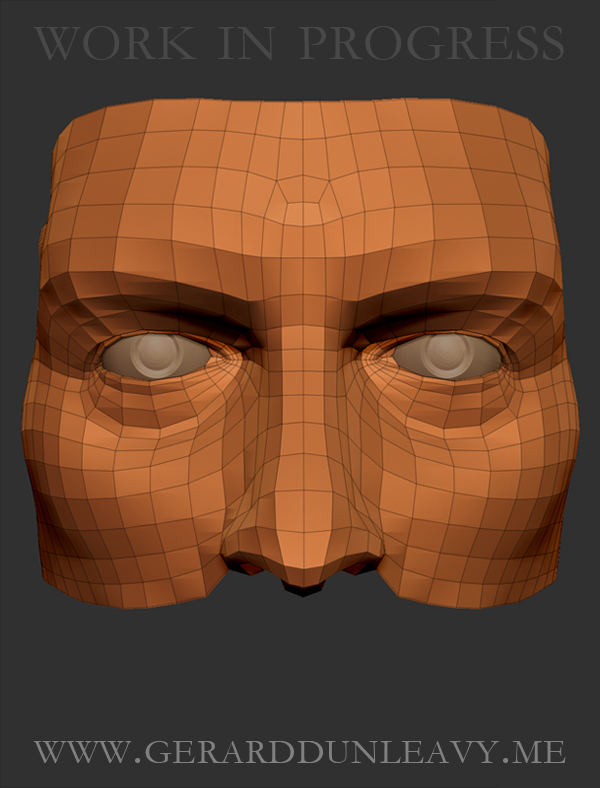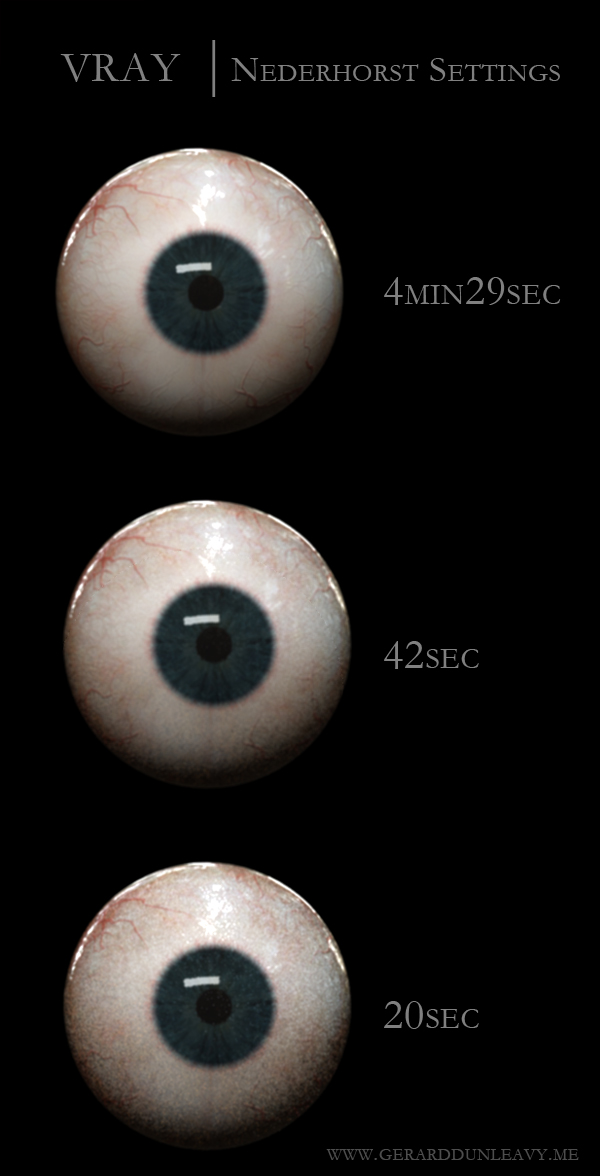…for the ui…pretty nice.
Hey man…thank you for the link… i had to google it and making a UI is simple as HELL…
I have an issue now… I have a UI element that won’t leave…how do I fix that… it is circled in red… and no matter how many times i keep trying to get rid of it… IT WON’T leave!
Is there a way around this?
EDIT: IMAGE REMOVED
Hi HaloAnimator, To get rid of buttons you don’t want just drag them onto the canvas while in custom UI mode and they disappear.
Also could you do me a favor and remove the image from your last post, I would like to keep my thread organised and avoid confusion as to who’s work belongs to who.
Thanks!
Yup…will do… i fixed my UI issue… I LOVE that feature
Capital, I just installed the smallscreen ui. It looks great but I haven’t really worked with it yet. Thank you so much for the small screen reconfigure. I couldn’t see how you were changing the brushes for the masking and cliping so I put the ‘current brush’ icon in the bottom shelf two spaces to the right of the color picker. I realize that there are some other things there regarding subdivision levels but it seems that the top of ‘current brush’ icon sticks up above the ‘sdiv level’ indicator just enough to acess it.
Thanks again Capital

All critiques and comments are welcome
Attachments
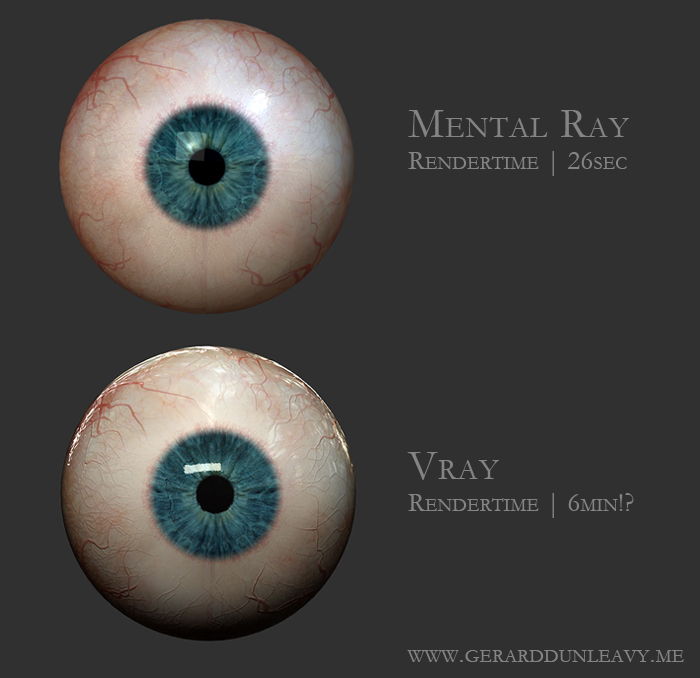
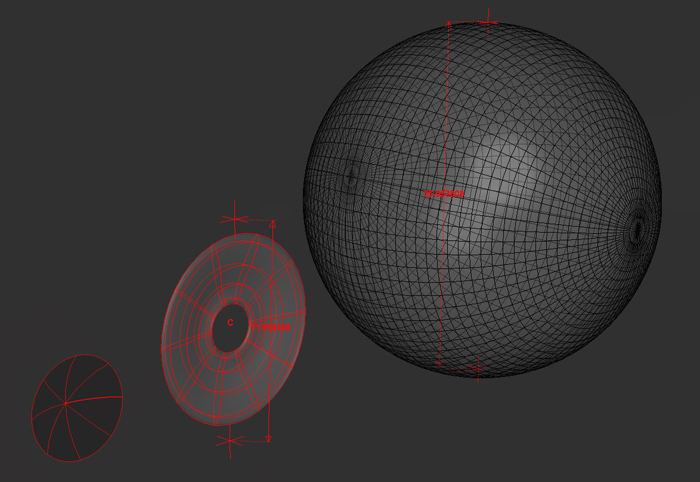
Hi,
What is the ‘uncanny valley’?
Thanks
do you explain to make this eye ? can you make a minitutorial? thanks sorry for my english
[attach=232537]uncanny_valley_thumb.jpg[/attach]
Hello Brandon, Thanks for stopping by, your work is fantastic.
I have pasted a little exerpt from one of my masters essays attempting to explain what the ‘Uncanny Valley’ is, I hope it makes sense.
“The roboticist Masahiro Mori first hypothesized the ‘uncanny valley’ in 1970.
He posited that as robots or other facsimiles of humans come to look more humanlike, there is a point at which the facsimile will actually evoke a feeling of repulsion and create unease among human observers.
The ‘valley’ in this case refers to a dip on a hypothetical graph that relates to the decline of human familiarity and the corresponding creepiness with an uncanny object.
Mori was focusing on the field of robotics when he wrote his theory, however the concept of the uncanny has most infamously been associated with the computer graphics industry.
You do not have to look far to find examples of the uncanny valley.
Whether it’s a creepy CG Ray Winston in the film ‘Beowulf’, a truly unsettling train conductor in ‘Polar Express’ or even an eerie CG Jeff Bridges in ‘Tron Legacy’, audiences are constantly being bombarded by creepy creations.” - Gerard Dunleavy
[attach=232536]uncanny_valley.jpg[/attach]
There are no clearly defined explanations for the ‘Uncanny Valley’ Phenomenon at the moment but some scientists believe that
"the uncanny valley response occurs because an animal - human or nonhuman – is evolutionarily inclined to develop an expectation of what members of its species should look like” – “Any face that violates that expectation is going to elicit the uncanny response”- Asif Ghazanfar
I hope this makes sense, if not let me know and I will try to explain it better.
All the best
-Gerard
Attachments
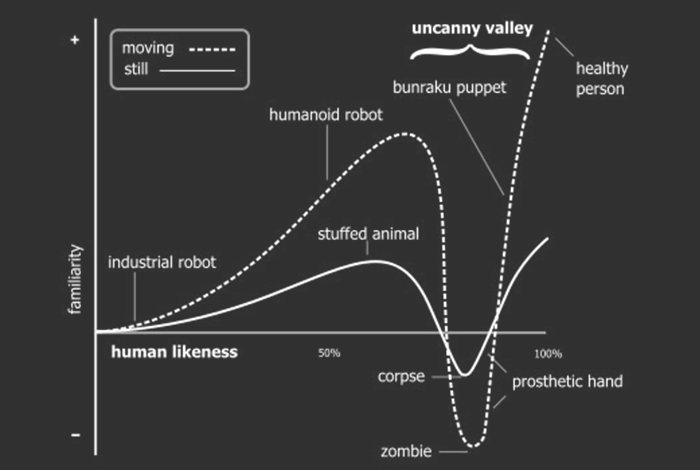

Vray one has a lot more life imo.
A simplified definition may be that as we get closer and closer to human likeness we experience a sense of creepiness about it because we can tell something is subtly off until we reach a point where you can’t tell the difference between the replica and the original at which point it looks normal to us again.
Ah hah. Yes, creepy, Beowulf. Thanks
about the eye. I’d be careful about making it too sharp, crisp and the veins too bumped. that doesn’t appear very life like to our perception, because even when we are relatively close and look into someones eyes, that isn’t how we seen them.
to give you another exammple: look at your hand, right in front of your as close as possible witout loosing focus. now, if you have a good digital camera, make a closeup/macro photograph of your hand or one finger. you’ll notice that you see a lot more fine crisp detail on the photograph.
point being, since we don’t permanently look at super crisp macro photographs, we perceive a little less sharp as more natural.
the specular on the first is too soft and dim.
about uncanny valley: If you don’t mind I would like to add an aspect of explanation here that is missing from what you posted.
The main reason why we find very close to real copies of humans often lifeless is how our brain deals with the information we get from an image.
if we look at just at a smiley, we get enough landmark information to recognize it as a smiling face by the dots for the eyes and the curved line for the mouth. (that also stems from our first days as babies and our first encounters with human faces, when we still see very blurry and faces are in fact not much more to us than big eye dots/blotches and a blurry mouth line.) our brain takes this very basic info and does the rest of the work itself by sort of interpolating all that is missing from a real face.
that way, any simple emoticon or very cartoony character can be extremly touiching and lively to us because our brain fills it with life.
now,- to pt it simple - the closer the image gets to reality though, the more lazy our brain becomes with filling the blanks, but instead starts to notice those blanks and mistakes that make the virtual face different from a real one. even if the image is very good and detailed and we can’t quite consciously put the finger on what is wrong, we subconsciously notice very clearly that something IS wrong.
that said still images/renders really can manage to practically have all the correct detail we see in any photograph of a real person and copy reality 1:1 and thus be rather convincing. when it comes to film and animation however it’s still nearly impossible to pull it off. not only do you see all the incredible seemingly random and at the same time naturally organized details of skin hair etc… and the extremly complex interaction with light , surrounding reflection and so forth, from all views, permanently changing, but you also have all the motion and macro-motion and body language and interaction with gravity, air/wind and so on and on. let alone that we don’t even completely know the range of information we do actually notice and process subconsciously when we look at other beings. to copy this shear endless amount of details on various levels correctly in a convincing way is still extremely difficult.
often it’s a much better idea not to try to copy, but invent - create a reality and life on its own.
there is also often a huge difference between reality as such and what we perceive as real and convincing in media. sometimes you have to do something which is probably physically incorrect, yet more convincing.
a good example for that are space battles in film. if they would be completely silent without any explosion noise we’d be far less intrigued, although in real space there’d be no sound at all when a spaceship goes boom! 
holy crap… that was a long post. hope it wasn’t too boring.
can you upload a screen shot of the mental ray material.
btw, here’s a pretty good tutorial on modeling a human eye.
http://www.thegnomonworkshop.com/store/category/171/Free-Tutorials-All
One thing I would say is that normally the eyes will never be so close to the camera that you will be able to see the bumps in the veins etc. In that case I would choose the mental ray since it will reduce my render time and I could use the extra time that I have saved into things that will be more prominent like refining the model or details or maybe composition. It all depends on you actually. If you have a shot of the close up of the eye then choose the vray. If not then use the mental ray. They both look realistic anyways 
franchute25 - Thanks for stopping by my thread, if you want a great tutorial for modeling and setting up shaders for an eye I suggest this Gnomon tutorial - Gnomon Eye Tutorial
Thanks very much to Julian_K for finding the link for me, I used this tutorial as a help for my own eye model.
Julian_K - Thanks very much for your feedback, I really appreciate the time you had taken to write it.
I totally agree with you about the sharpness of the eye, rarely would an eye appear so close up or so detailed.
My next step will be to have it with eyelids and a face to see how it looks in context.
Your perspective on the ‘uncanny valley’ is very interesting, I would agree that artists should try and step away from copying reality and try to invent their own pieces. At the moment the exaggeration or stylisation of reality is the best approach to avoid the uncanny.
just look at the work of Pixar, those guys had a nasty run in with the ‘uncanny valley’ when they made the creepy baby in their short ‘Tin Toy’ . They learned the hard way and have avoided the valley ever since.
Its great that we can discuss the uncanny valley on this forum, I think its an important concept for many CG artists.
jaski - Thanks for your feedback, I agree that we will never be this close up to an eye to see all the veins and bumps, my next move will be to model a face and see how the eye looks with it.
Thanks everybody for your comments and feedback I really appreciate it.
All the best
Gerard
woah!? that is pixar? never seen this one. it’s just disastrous in every aspect and the horrible animation only makes the bad model worse.
anyway, this time period where hard and software simply makes it possible for many to do photo-realistic renders reminds me a lot of the early 80’s when on fine art photo realism was quite hip for a while. It bored me then and bores me today. more or less the only painter who really artistically survived till today is Helnwein who always at least had pretty challenging subjects.
The thing is, if I see one of those renders where you can’t tell the difference to a photograph anymore, then my first impression is of course always respect and amazement for the amount of precise work that has been put into it. Even though I know how it’s done I always marvel at it. for 10 minutes.
then it starts to cool off for me and if it’s really just a pretty tech show off I forget about it almost instantly and off I go to the next image.
interesting art always is a reality on its own and bears some kind of remaining secret. if the only secret is the technical aspect of “wow how has that been done” then it has not much more to offer once you know how it’s done.

As always, critiques and comments are very welcome.
All the best
- Gerard
Attachments
